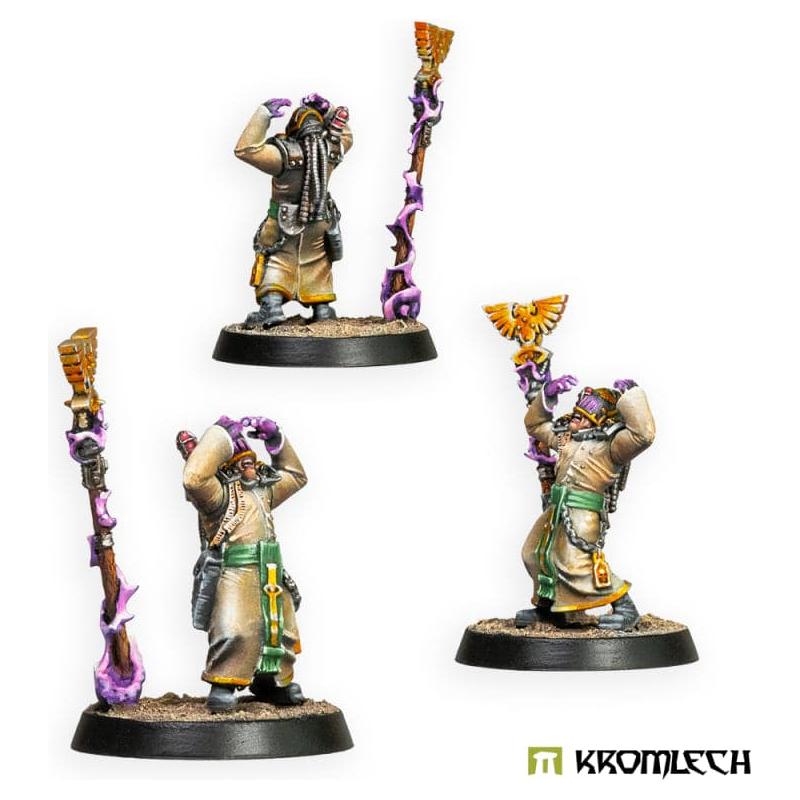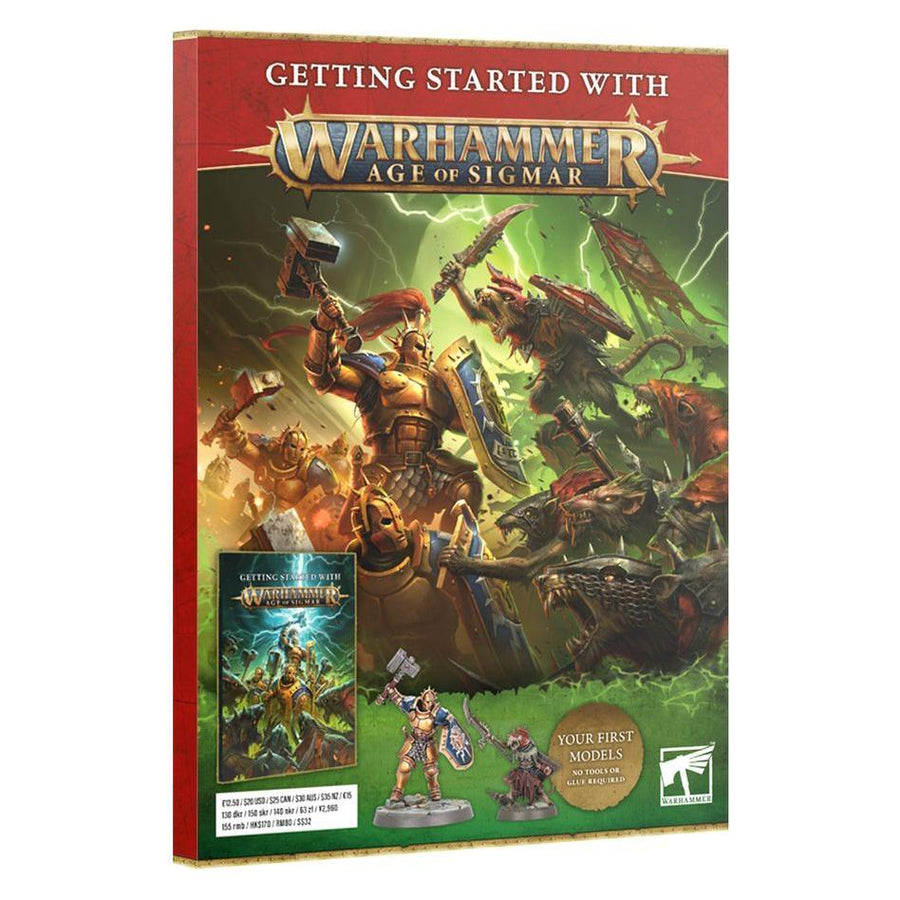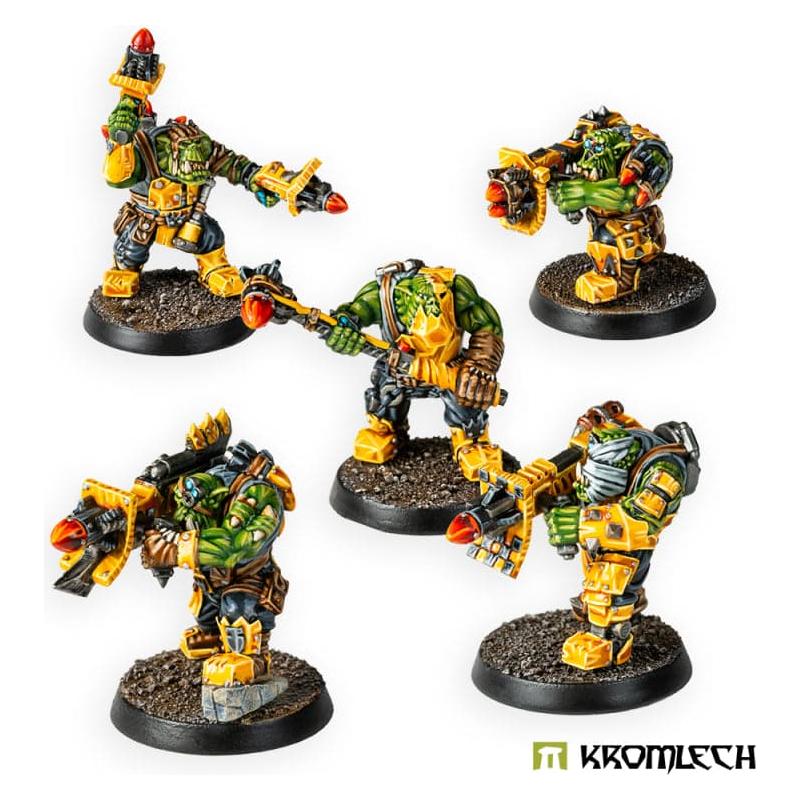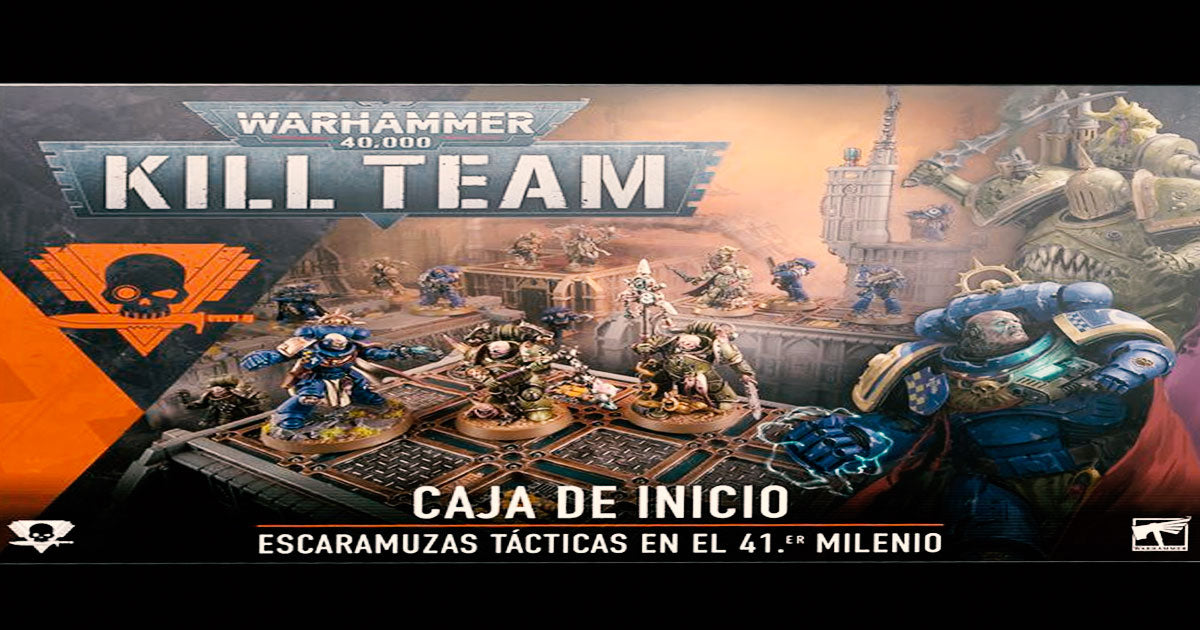Why Some Miniatures Are More Expensive Than Others
Understanding the true value behind miniature pricing
Whether you fancy tabletop wargames, detailed display busts, or massive fantasy armies, you've prolly scratched your head wondering why some tiny plastic soldiers cost a week's coffee budget while others might set you back the price of a decent dinner out.
For those of you browsing for top-quality pieces or just starting your collection, we've got a ripper selection of miniatures and gaming miniature models — all selected for hobbyists who know the difference between ordinary and extraordinary.
| Miniature Pricing at a Glance | |
|---|---|
| Materials & Manufacturing | How premium resins, metals and manufacturing techniques affect durability and detail |
| Detail & Sculpt Quality | Why intricate designs from master sculptors command higher prices |
| Brand & Licensing | How companies like Games Workshop set premium pricing through IP and reputation |
| Painted vs. Unpainted | The significant price jump when professional painting enters the equation |
| Production Volume | Why limited runs and boutique manufacturers charge more per model |
| Customisation Options | How interchangeable parts and miniature bases affect complexity and cost |
| 3D Printing Impact | How this technology is disrupting traditional pricing models |
| Collector Value | Why some miniature busts and limited editions increase in value over time |
Whether you're a grizzled veteran who's been painting for decades or a newcomer just picking up your first gaming miniature squad, understanding what drives those price tags will help you buy smarter — and maybe even appreciate those high-end pieces a bit more. Check out our gaming miniature groups to see these pricing factors in action across different ranges.
Materials & Manufacturing
The material of your miniature isn't just about looks—it's the foundation that determines everything from durability to detail retention and painting experience. Different materials come with their own pros, cons, and manufacturing challenges that directly impact what you pay at checkout.
Premium miniatures often use specialised materials that cost more to source and work with. Resin, for example, captures finer details than standard plastic but requires more complex moulds and careful handling during production. This extra care and attention drives up costs significantly.
Material costs have been all over the shop in recent years. From 2020 to 2023, we've seen plastic miniature components rise by roughly 15%, while metals like pewter and zinc have jumped nearly 25%. These increases flow straight down to retail prices, affecting everything from gaming miniature models to display pieces.

The manufacturing process itself also plays a massive role in price determination. Mass-produced plastic miniatures might use injection moulding with cheaper materials, while boutique producers often cast each piece individually, sometimes even by hand. This labour-intensive approach creates better results but at a significantly higher cost.
Material Comparison Table
| Material | Pros | Cons | Price Impact |
|---|---|---|---|
| Standard Plastic | Affordable, durable, good for beginners | Limited detail, visible mould lines | Lower (baseline) |
| Premium Plastic | Better detail, less flash, holds paint well | Higher cost, still some limitations | 20-30% higher |
| Resin | Exceptional detail, crisp edges, premium feel | Brittle, requires washing before painting | 50-100% higher |
| Metal | Weight, durability, nostalgia factor | Heavy, prone to chipping, harder to modify | 70-120% higher |
Ya can feel the difference between cheap and premium materials the moment you hold them. Our miniatures collection includes options across these materials, letting you experience firsthand how material quality translates to both price and satisfaction.
Detail & Sculpt Quality
The difference between an ordinary miniature and one that makes your jaw drop comes down to the sculpt. Highly detailed sculpts demand more from designers, digital artists, and production teams—all of which adds to the final price tag.
Premium sculpts aren't just more detailed; they're more anatomically correct, have dynamic poses, and feature intricate elements like facial expressions, realistic fabric folds, and weapon details. Creating these elements requires skilled artists who command professional rates for their expertise.
Many collectors don't realise that a single highly detailed miniature can take hundreds of hours to design. First comes concept art, then digital sculpting, prototype printing, feedback, revisions, production mould creation, and final quality control. For premium pieces like those in our miniature busts collection, this process might involve multiple skilled professionals over many months.
When ya buy a premium miniature, you're not just payin' for a bit of plastic or resin—you're investing in hundreds of hours of artistic vision, technical skill, and production expertise.
Studios like Kromlech have built their entire reputation on exceptional sculpt quality. Their designers focus on creating characterful models with more personality and detail than mass-market alternatives—and customers are happy to pay extra for this distinctiveness.
The quality difference becomes obvious when examining fine details like:
- Facial features and expressions
- Weapon details and mechanical elements
- Armour panel lines and battle damage
- Organic textures like fur, scales, or skin
- Environmental details on bases or terrain
For painters and collectors, these details aren't just nice to have—they're essential for bringing models to life with paint and creating visually impressive displays or gaming tables.
Brand Prestige & Licensing
Let's be honest—brand names matter in the miniatures world, and they definitely affect pricing. Established companies like Games Workshop have spent decades building their reputation and intellectual property, which allows them to command higher prices for their gaming miniature squads and character models.
Licensed miniatures based on popular franchises (like Star Wars, Lord of the Rings, or Marvel) carry additional costs that get passed to consumers. The licensing fees for these properties can add 20-30% to manufacturing costs before the first miniature is even produced.

Brand recognition also plays into community support and tournament play. Official miniatures from primary manufacturers are usually required for organised play events, creating a captive market that supports premium pricing. Players serious about competitive gaming often have no choice but to invest in official models from established brands.
Official vs. Alternative Miniatures
| Aspect | Official Branded Miniatures | Alternative/Third-Party Options |
|---|---|---|
| Price Point | Premium | More affordable |
| Support Materials | Full rulebooks, painting guides, lore | Limited or community-created content |
| Release Schedule | Regular, predictable releases | Sporadic or reactive to market |
Some hobbyists prefer to blend their collections, using official models for core units while adding characterful third-party options like those from our gaming miniature groups for special characters or unique elements.
Painted vs. Unpainted Miniatures
The painting stage represents a massive value-add in the miniatures world. A professionally painted miniature might sell for 2-10 times the price of its unpainted counterpart, depending on the painter's skill and reputation.
This price difference reflects both the time investment (often 5-20+ hours per model) and the specialized skills required. Professional painters train for years to perfect techniques like blending, glazing, freehand work, and weathering—all of which add significant perceived value to the final product.
For many collectors, the appeal of pre-painted miniatures is simple: they get display-worthy models without investing their own time in painting. This is particularly attractive for those who enjoy the gaming or collecting aspects of the hobby but don't have the time, skills, or interest in painting.
Painting Value Factors:
- Quality of blending and transitions
- Freehand details and customisations
- Base complexity and environmental storytelling
- Weathering effects and battle damage
- Object source lighting and advanced techniques
For those preferring to paint their own models, we offer an extensive selection of unpainted miniatures at more accessible price points, along with quality paints and tools to help you achieve professional results.
Production Volume & Rarity
Economics 101 comes into play with miniature production scales. Mass-produced plastic miniatures benefit from economies of scale—the more you make, the cheaper each unit becomes. Meanwhile, limited runs can't spread their setup costs across as many units, forcing higher per-model pricing.
The numbers tell the story clearly: A mass-market miniature might have production runs of 10,000+ units, spreading the initial design and mould costs across many sales. Boutique or limited-edition pieces might only see 500-1,000 units produced, meaning each model must carry a larger portion of those fixed costs.
Smaller manufacturers and independent sculptors simply can't match the economies of scale that industry giants achieve. Instead, they compete on uniqueness, character, and specialised designs that fill gaps in the market. Our collection includes both mass-produced standards and distinctive limited runs from boutique producers.

Limited availability also creates psychological value through perceived scarcity. When collectors know a particular miniature bust or character model has a finite production run, they're often willing to pay premium prices to secure their copy before supplies run out.
Customisation & Add-Ons
Modularity and customisation options significantly affect miniature pricing. Models with interchangeable parts require more complex design work, additional sprues, and more extensive testing—all driving up production costs.
For players and hobbyists, these options provide tremendous value through versatility. A kit that can build multiple weapon configurations or character variants essentially delivers several miniatures in one package, justifying the higher price point compared to single-pose alternatives.
The complexity is immediately apparent when comparing basic troop models to character kits with multiple build options. While basic infantry might have 5-10 parts, character kits or vehicles with customisation options might include 50+ components, dramatically increasing the manufacturing challenge.
The more ways you can build and customise a kit, the more design time, components, and packaging costs go into making it—all factors that push price points higher.
Extras like detailed miniature bases also add significant value. These aren't just aesthetic choices—they provide context and storytelling elements for your models. Premium bases with environmental details can add 20-40% to a miniature's overall cost but elevate the final presentation dramatically.
Accessories like decals, banners, alternate heads, and equipment options all require additional design work, tooling, and manufacturing processes. Each option increases the complexity of production and the final cost, but also enhances the value proposition for serious hobbyists who appreciate these customisation opportunities.
Technological Disruption: 3D Printing
The rise of consumer 3D printing technology has sent shockwaves through the traditional miniatures market, creating new price pressures and opportunities for both manufacturers and consumers.
Modern resin printers can produce models with detail rivaling or even exceeding traditional manufacturing methods at a fraction of the per-unit cost. While the initial investment in a printer and materials represents a significant outlay, the economics become compelling for regular painters and collectors who might otherwise spend hundreds of dollars on miniatures each year.
For traditional manufacturers, this disruption has forced new approaches to value proposition. They now emphasise official tournament support, community engagement, regular releases, and integration with game systems—elements that home printing can't replicate.
This technology shift hasn't eliminated demand for commercial miniatures—many hobbyists prefer the convenience and guaranteed quality of traditional products, especially for core army units and official tournament pieces. Our gaming miniature models continue to provide value through consistent quality, immediate availability, and official support.
Secondary Market & Collectibility
Some miniatures transcend their initial pricing to become valuable collectibles, particularly those from limited runs, discontinued lines, or featuring iconic characters. This secondary market creates another dimension of value that savvy collectors consider when making purchases.
The collectibility factor is driven by several elements:
- Limited availability — Once production ends, supply is permanently capped
- Nostalgia — Older sculpts connect collectors to formative hobby experiences
- Gaming value — Powerful or iconic units remain desirable for gameplay
- Artistic significance — Work by renowned sculptors appreciates over time
- Historical importance — Pieces that represent pivotal moments in a game's evolution
For investors and serious collectors, understanding these factors helps identify miniatures with potential for appreciation. While not all miniatures increase in value, those with distinctive design elements, limited production runs, or cultural significance within their gaming communities often do.
Our collection includes modern pieces with potential collector value, particularly in our miniature busts and character models from Kromlech and other boutique manufacturers whose limited production runs set the stage for future scarcity.
The most valuable miniatures combine quality sculpting, historical significance, limited availability, and emotional connection—a perfect storm of collectibility that transcends their original price point.
Frequently Asked Questions
Are expensive miniatures really worth the extra cost?
For serious hobbyists and collectors, premium miniatures often justify their price through superior detail, material quality, and artistic value. The difference becomes obvious once painted—premium sculpts simply offer more opportunities for highlighting, shading, and detailing. That said, value is subjective, and beginners might be better served starting with more affordable options from our miniatures collection before investing in high-end pieces.
Why do Games Workshop miniatures cost so much?
Games Workshop's pricing reflects several factors working together:
- Proprietary IP and rule systems that create a captive market
- High-quality plastic with excellent detail retention
- Regular new releases requiring ongoing design investments
- Extensive support system including stores, events, and publications
- Brand premium built over decades of market leadership
Is 3D printing cheaper than buying commercial miniatures?
For regular hobbyists, home printing offers significant savings over time, but lacks the convenience and guaranteed quality of our gaming miniature models.
Conclusion
Understanding what drives miniature pricing helps ya make smarter purchases that balance your budget with your hobby goals. Whether you're chasing the finest detail in premium sculpts, building massive armies on a budget, or investing in potential collectibles, knowing the factors behind those price tags lets you focus your spending where it matters most to you.
The miniatures market continues to evolve, with traditional manufacturers competing against 3D printing technology and boutique producers finding their niche through specialisation and exceptional quality. This competitive landscape ultimately benefits hobbyists through more options at different price points and quality levels.
Final Thoughts:
At the end of the day, the "right" price point depends entirely on what you value most. Detail obsessives might happily invest in premium miniature busts, while competitive players might prioritise building complete armies with more affordable options. Whatever your approach, remember that the joy of the hobby comes not just from the miniatures themselves, but from the creativity, community, and satisfaction of bringing your vision to life—no matter what ya paid for the bits of plastic and resin that got ya there.
 is here! Shop now, pay later in 4 easy installments
is here! Shop now, pay later in 4 easy installments

